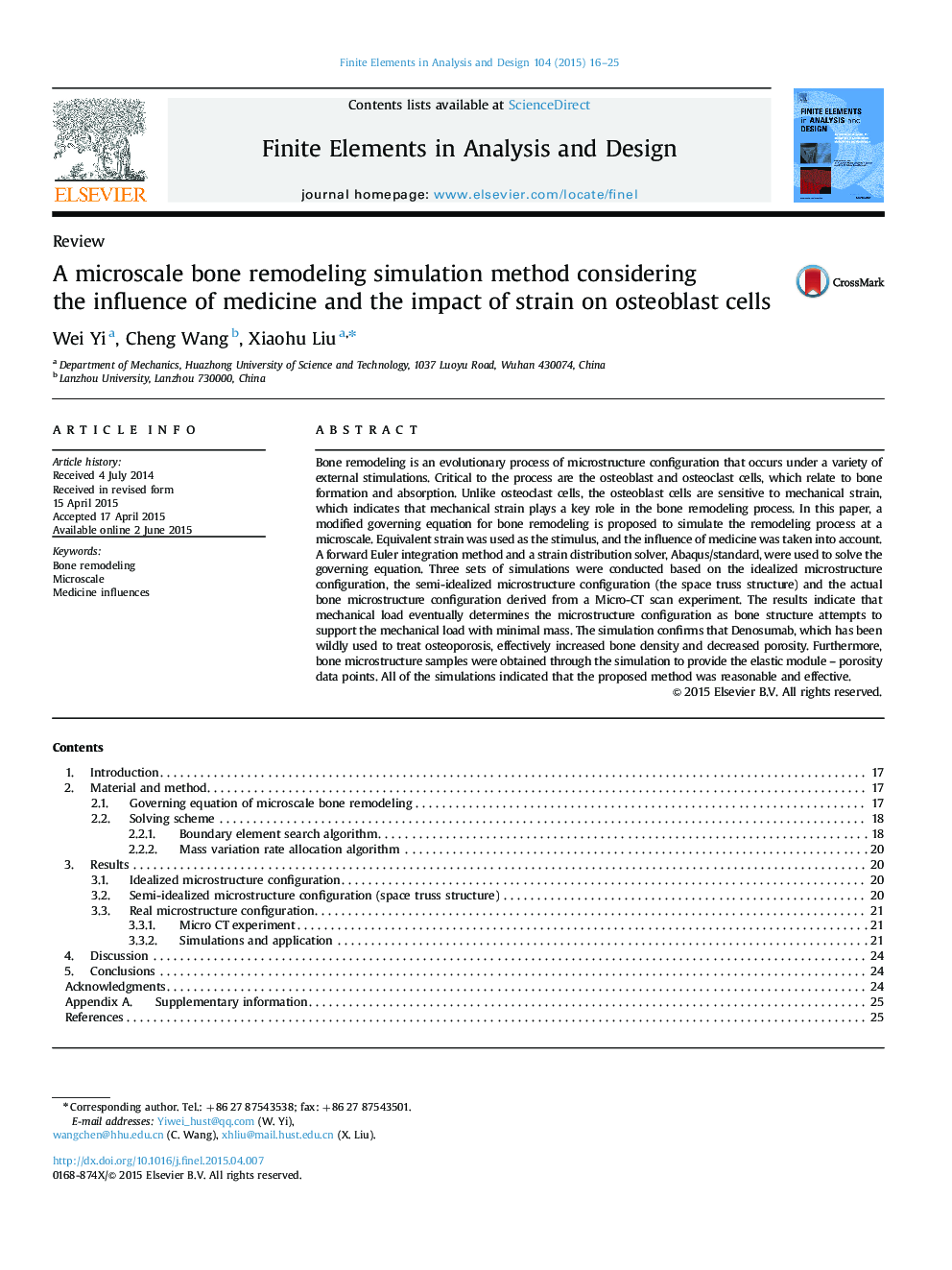| Article ID | Journal | Published Year | Pages | File Type |
|---|---|---|---|---|
| 513831 | Finite Elements in Analysis and Design | 2015 | 10 Pages |
•Proliferation, differentiation and drugs influence were considered.•A so called domain separated method (DSM) was proposed to establish FE mesh model.•Formation rate was calculated based on vitro cell experiment data.•Several interesting sets of bone remodling simulations results were presented.
Bone remodeling is an evolutionary process of microstructure configuration that occurs under a variety of external stimulations. Critical to the process are the osteoblast and osteoclast cells, which relate to bone formation and absorption. Unlike osteoclast cells, the osteoblast cells are sensitive to mechanical strain, which indicates that mechanical strain plays a key role in the bone remodeling process. In this paper, a modified governing equation for bone remodeling is proposed to simulate the remodeling process at a microscale. Equivalent strain was used as the stimulus, and the influence of medicine was taken into account. A forward Euler integration method and a strain distribution solver, Abaqus/standard, were used to solve the governing equation. Three sets of simulations were conducted based on the idealized microstructure configuration, the semi-idealized microstructure configuration (the space truss structure) and the actual bone microstructure configuration derived from a Micro-CT scan experiment. The results indicate that mechanical load eventually determines the microstructure configuration as bone structure attempts to support the mechanical load with minimal mass. The simulation confirms that Denosumab, which has been wildly used to treat osteoporosis, effectively increased bone density and decreased porosity. Furthermore, bone microstructure samples were obtained through the simulation to provide the elastic module – porosity data points. All of the simulations indicated that the proposed method was reasonable and effective.
